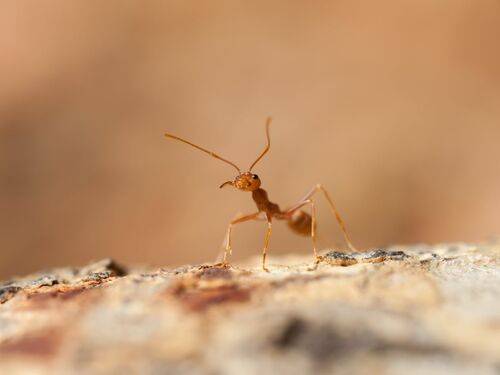Pest of the Month: Ants in Your Trees—Identification, Impact, and Control
Understanding the Relationship Between Ants and Trees
Ants are common insects in many landscapes, but their presence on trees often goes unnoticed or is misunderstood. This comprehensive guide will help you identify when ants become a problem for your trees, how to address the issue, and when to seek professional help .
Are Ants Really Harmful to Your Trees?
Before taking action, it’s crucial to understand the relationship between ants and trees. In most cases, ants are not directly harmful to healthy trees. Their presence often indicates other underlying issues that require attention.
Why Ants are Attracted to Trees
Ants are drawn to trees for two primary reasons:
- Honeydew Harvesting: Ants collect sweet secretions (honeydew) left behind by sap-feeding insects like aphids or scale insects.
- Nesting Opportunities: Some ant species seek out trees with rotting wood or cavities for shelter.
When Ants Become a Problem: Identifying Harmful Species

A Fire Ant Crawling on Tree Bark
While most ant species are relatively harmless to trees, there are exceptions:
1. Carpenter Ants
Signs of Infestation:
- Piles of sawdust near tree roots
- Visible tunnels in wood
- Large, dark-colored ants (1/4 to 1/2 inch long)
Potential Damage: Carpenter ants can cause severe structural damage to trees by excavating galleries in wood for nesting.
2. Red Imported Fire Ants
Signs of Infestation:
- Dome-shaped anthills at the base of trees
- Aggressive behavior when disturbed
- Reddish-brown ants with painful stings
Potential Damage: Fire ants can damage young trees and pose a risk to humans and pets due to their painful stings.
Ant Control Strategies for Tree Protection

Fire Ants Tending to Aphids for Food
Prevention and Non-Chemical Control Methods
- Maintain Tree Health: Healthy trees are less attractive to problematic ant species.
- Prune Dead or Decaying Branches: Remove potential nesting sites for carpenter ants.
- Seal Entry Points: Caulk small openings in the tree bark to prevent ant access.
- Remove Honeydew-producing Insects: Control aphids and scale insects to reduce ant attraction.
Safe and Effective Ant Removal Techniques
When ants become a nuisance or threat to your trees, consider these eco-friendly removal methods:
- Ant Powder Application: Sprinkle ant powder around the tree base to kill foraging ants.
- Peppermint Oil Spray: Mix peppermint oil with water and spray on the tree to repel ants naturally.
- Insecticidal Soap: Use horticultural soap to eliminate sap-feeding insects, reducing the ant food source.
- Boric Acid Bait: Place boric acid-based ant baits near the tree to control ant populations.
Professional Tree Care and Ant Management
For severe infestations or when dealing with harmful ant species, it’s best to consult a professional arborist . They can:
- Accurately identify the ant species
- Assess tree health and structural integrity
- Recommend appropriate treatment methods
- Safely apply professional-grade insecticides if necessary
Conclusion: Balancing Ant Control and Tree Health
While ants can sometimes indicate underlying tree health issues, it’s essential to approach ant control with caution. By understanding the relationship between ants and trees, you can make informed decisions about when and how to intervene.
Remember, healthy trees are your best defense against problematic ant infestations. Regular tree maintenance, proper watering, and timely pruning can go a long way in preventing ant-related issues.
For residents in the San Fransisco Bay Area facing ant problems in their trees, Arborist Now offers expert tree care and pest management services. Contact us today for a personalized quote and professional assistance in maintaining the health and beauty of your landscape.
Originally posted on February 14, 2020.


